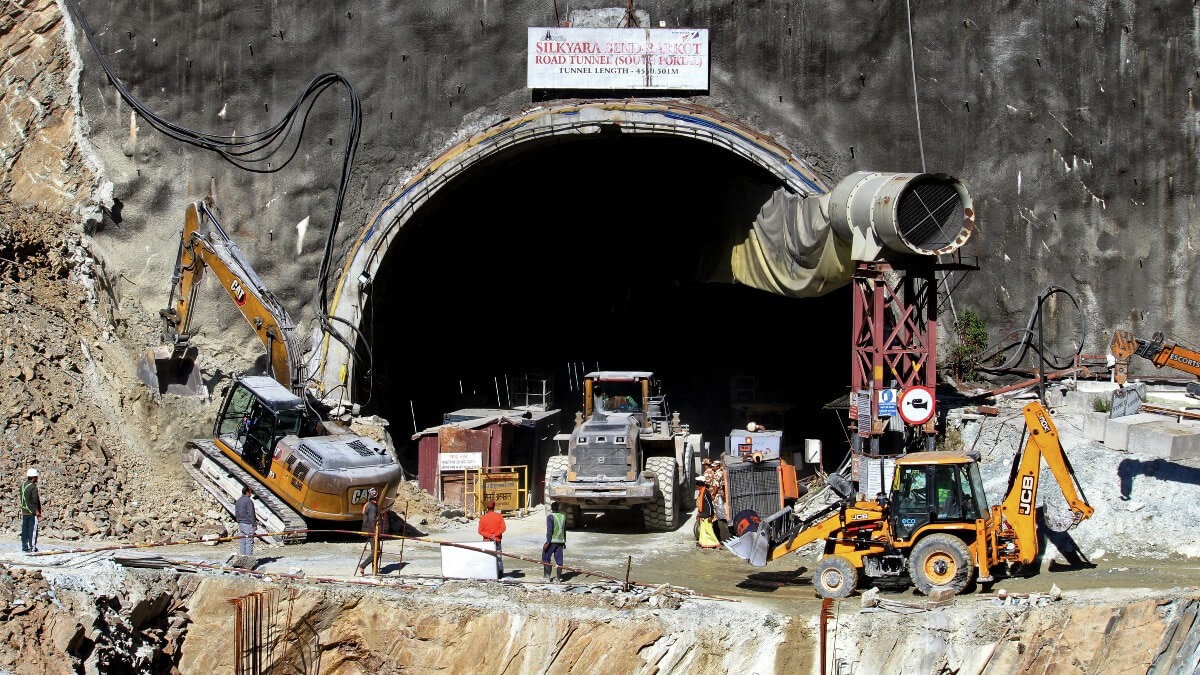Collapse of the Uttarkashi Tunnel: The Ministry of Road Transport and Highways Unveils Five Evacuation Plans for 41 Trapped Workers in the Silkyara Tunnel.
Uttarkashi Tunnel Collapse: Unveiling Five Evacuation Strategies for Trapped Workers
In the aftermath of the Uttarkashi tunnel collapse, a six-inch pipe breakthrough has offered a glimmer of hope for the 41 workers trapped in the Silkyara tunnel in Uttarakhand. Despite the challenges posed by falling debris and mechanical breakdowns, the Ministry of Road Transport and Highways has devised five distinct evacuation plans. Here’s an in-depth look at these strategies:
- Vertical Drilling (1.2 metre-wide hole):
- A 1.2 metre-wide hole will be vertically drilled from above the tunnel, covering a distance of 90 meters to reach the trapped workers.
- Three drilling machines, including one from Gujarat and another from Odisha, are set to facilitate the vertical drilling operation.
- Horizontal Boring by NHIDCL:
- The National Highways and Infrastructure Development Corporation Limited (NHIDCL) will employ an Augur boring machine for horizontal drilling from the Silkyara side.
- The objective is to drive a steel pipe horizontally through the debris, providing an escape route for the trapped workers.
- Vertical Tunnel by ONGC:
- The Oil and Natural Gas Corporation (ONGC) will create another vertical tunnel at the 2.3-km mark, utilizing expertise in deep drilling.
- The tunnel, nearly 325 meters deep, involves machines imported from the US, Mumbai, and Ghaziabad.
- Rescue from Barkot End:
- Tehri Hydro Development Corporation will construct a 483-metre-long narrower tunnel through the Barkot end using the conventional drill and blast method.
- Horizontal Drilling by RVNL:
- Rail Vikas Nigam Limited (RVNL) is engaged in micro-drilling from the left of the tunnel, creating a 1.2 metre-wide and 168-metre-long horizontal tunnel.
- This tunnel will intersect the existing tunnel around the 300-metre mark from the Silkyara side.
The breakthrough on Monday involved successfully widening the tube using a six-inch pipe, enabling the delivery of supplies and assessment via camera. The rescue mission, led by various agencies, is a collaborative effort involving experts, engineers, and officials. Uttarakhand Chief Minister Pushkar Singh Dhami emphasized the top priority of the rescue mission, with Prime Minister Narendra Modi closely monitoring the situation. The collapse occurred on November 12 during the construction of the Silkyara to Barkot tunnel, trapping workers in a 2 km-built tunnel portion.

